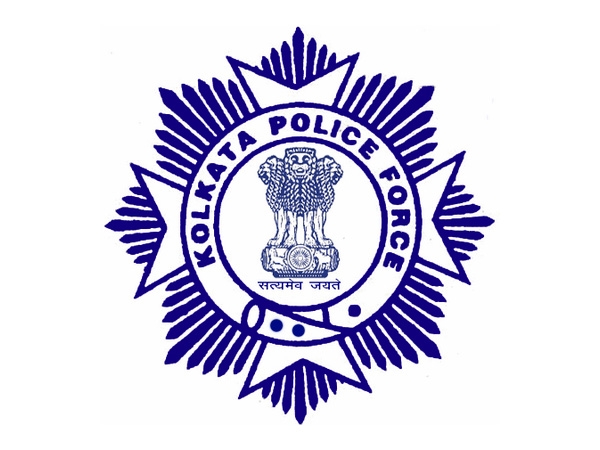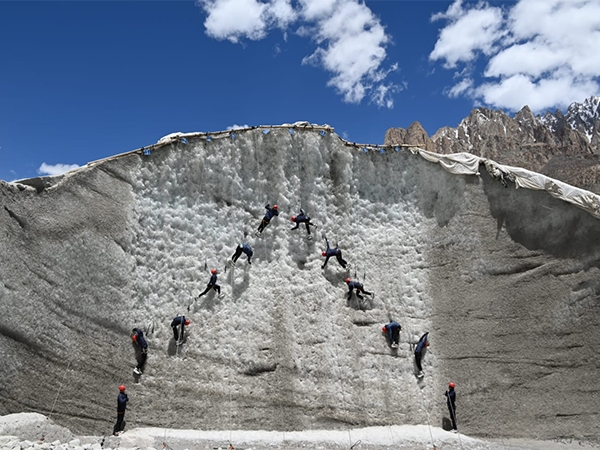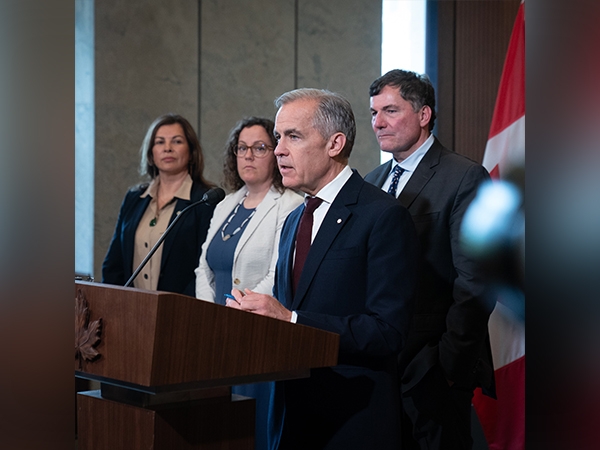The Abortion Ship: how a doctor took to the high seas to liberate women

On 27 June, an Abortion Drone will fly into a small village in Poland. Its objective: to send in pills to induce abortions.
The drone weighs less than 5 kilos. But it's carrying with it the weight of centuries of repression. A repression Rebecca Gomperts is determined to end.
It's a story that starts on an ordinary Monday 11 years ago. On 23 August 2004, Dr Gomperts - previously a doctor on a Greenpeace ship - set sail on a Dutch vessel that was widely hailed in local media as the 'Abortion Ship', and she, the Dutch Abortion Captain.
During her time with Greenpeace, Gomperts saw up close hundreds of women who had suffered - physically, emotionally and financially - thanks to regressive abortion laws. A doctor who conducted abortions herself, she concocted a plan.
In clever waters
A ship registered in the Netherlands, in international waters anywhere in the world, falls under Dutch jurisdiction. Under Dutch law, abortions are legal. Therefore, a woman of any nationality could take abortion-inducing pills on-board a Dutch ship, in international waters, without legal repercussions. Gomperts' plan: to go from country to country, allow women on-board her ship, administer them abortion pills on the high seas, and send them home to recuperate.
It was ingenious, and better still, entirely legal. There were, however, some logistics to take care of. Under Dutch law, pills must be administered in a clinic. And so a mobile clinic was set up inside a cargo container. The container had to be positioned on the deck of the ship to allow patients access. Here, she encountered another problem - the transport ministry threatened to revoke the ship's authorisation because of the container's position on the deck.
Exhibiting a resourcefulness she is now famous for, Gomperts called in her friend Joep van Lieshout, an artist who raised funds from the National Art Council and rendered the clinic a 'functional work of art'. This particular work of art was 'a-portable' and therefore, could remain on deck. With the paperwork sorted, Gomperts set sail.
Taking on nations
So provoked were the Portuguese authorities that two maritime warships were sent to intercept her. She would not be allowed into Portuguese waters: the government considered her a threat to national security.
Gomperts appealed to the Portuguese judiciary to intervene, but the judge ruled in favour of the Government. Women on Waves - the NGO that Gomperts leads - was not going to be allowed in.
She may not have won that particular battle, but she did win the war - thanks, ironically, to the warships sent her way. The act of aggression against a fellow European ship flouted European conventions, and an international outcry erupted.
It did more to highlight the issue of abortions in Portugal than all the abortions Gomperts could have performed and eventually brought the government down. Less than three years later, on 10 April 2007, abortion laws in Portugal were liberalised.
The global scale of the abortion challenge
Portugal may have been the trigger, but restriction of abortion rights is a global phenomenon. About 40% of women live in parts of the world with limited access to abortions. This does not, as the case is often made, deter abortions - it merely forces women to perform potentially fatal procedures on themselves or use quacks.
One woman wrote to Women on Waves: "My sister said that drinking bleach will help me miscarry. Is this true? I'm scared."
Over 21 million women undergo unsafe abortions every year. Of these, 47,000 die. That, to put it in perspective, is a woman dying of an unsafe abortion every ten minutes.
How safe is the 'abortion pill'?
The history of abortifacients - drugs that can induce an abortion - is surprisingly rich. In 1085 CE, Constantine of Africa wrote that a concoction of 'iris, rue, willow, stinking ferula' could induce menstruation. 'Cinnamon, rue, wallflower broth' were thought to have a similar effect. Recipes for these concoctions were passed down for centuries through midwives. But after a Church decree declared abortions a sin, midwives were burnt as witches.
That abortion aids are considered dangerous is likely a function of repressed literature and research. In fact, with the exception of ectopic pregnancies - one in which the foetus develops outside the womb - the use of these pills is widely documented as safe for women in their first six weeks of pregnancy. Statistically, in fact, childbirth is 14 times more dangerous. In the US alone, between 1980 and 2005, there were 8.8 deaths per 1,00,000 women due to childbirth. In contrast, there were 0.6 deaths per 1,00,000 women who underwent a legal abortion.
One woman wrote to Gomperts: 'My sister said that drinking bleach will help me miscarry. Is this true? I'm scared'
Gynaecologist Sushmita Misra of Sukhmani Hospital in south Delhi has reservations about abortions prescribed without certain information. She insists that while the process is safe, a physician must have access to the ultrasound to detect ectopic pregnancies as well as haemoglobin levels and blood groups of both parents. "It is safe, but a doctor must be in contact with the patient and able to detect complications at all times."
The birth of Women on Web
As increasingly complex logistics, costs and political backlash started to restrict the scale of Gomperts' work, she came up with an equally ingenious alternative - Women on Web.
It provides a simple service. You write to the site, give them the status and duration of your pregnancy, and they'll tell you if the abortion pills are suited for you. Email them your ultrasounds and relevant medical information, and they'll send you the medication you require.
Wherever in the world you may be, Mohan Kale, an exporter based in Nagpur affiliated with Gomperts, will courier you the abortion kit. Should a prescription be required in your country (as is the case in India), the exporter will require a copy of that.
This simple system circumvents national legal restrictions around abortion pills: in most countries, the law allows you to receive medication for personal use. Mifepristone and Misoprostol, the two pills that in combination are called the abortion pill, are on the World Health Organisation's list of essential medicines. Individually, both tablets are also used for other medical conditions, so they're not restricted or banned drugs. This makes it easy for doctors at Women on Web prescribe them.
In Poland, a woman has to prove rape or incest, or danger to her life during childbirth, to qualify for an abortion
Once they dispatch the pills, the staff stay in touch with the women while they recuperate from the abortion and remain on the lookout for warning signs. Should a woman require medical help, Women on Web will insist she seek it. If all goes smoothly, her symptoms should be no different from those observed during a spontaneous miscarriage. The risks of being found out are negligible.
Unlike most abortion activists, Gomperts doesn't see the abortion debate through the prism of choice. In a conversation with the New York Times, she said, "women do not experience abortion as a right they are acting upon. They experience it as an emergency. They think - 'It's an emergency. I need this'."
Now, as she prepares to send the pill via drone to Slubice in Poland, she's aware her work is entering even more controversial territory. "This isn't an airdrop," she explained to the New Statesman in a phone interview. "It's an individual delivery method. We're not dropping bags full of abortion pills into Poland."
The idea of using drones is to highlight the restrictive nature of Poland's abortion laws - and the huge disparity in the rights of women who live just a few metres apart. Across the border in Germany, abortions are legally available. Yet in Poland, within range of eyesight, a woman has to prove rape or incest, or danger to her life during childbirth, to qualify for an abortion.
It's a medical need so dire that for some women, climbing onto a Dutch boat and procuring pills on the high seas, or standing by in an empty field awaiting delivery of drugs by drone, is the most sensible thing to do. Fortunately, they have a fearless, ingenious conspirator by their side.

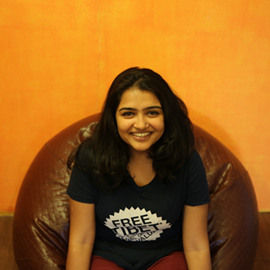
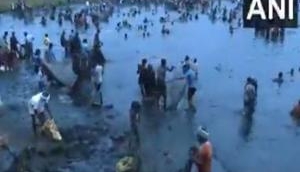

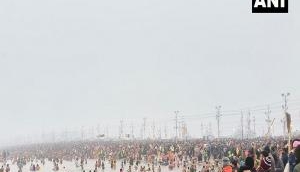


![BJP's Kapil Mishra recreates Shankar Mahadevan’s ‘Breathless’ song to highlight Delhi pollution [WATCH] BJP's Kapil Mishra recreates Shankar Mahadevan’s ‘Breathless’ song to highlight Delhi pollution [WATCH]](https://images.catchnews.com/upload/2022/11/03/kapil-mishra_240884_300x172.png)

![Anupam Kher shares pictures of his toned body on 67th birthday [MUST SEE] Anupam Kher shares pictures of his toned body on 67th birthday [MUST SEE]](https://images.catchnews.com/upload/2022/03/07/Anupam_kher_231145_300x172.jpg)


